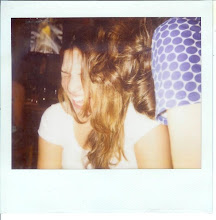
In the “Film Audience” chapter of Graeme Turner’s “Film as a Social Practice IV”, he discusses the viewers of these films and their influence on the film itself. Turner writes, “Movies might be made by actors, directors and producers, but they are ultimately made successful by audiences.” (pg. 130) I found the section on “Audience Identification” was very interesting. Turner analyzes the relationship between the viewer and the character on screen. “We have always been told that we ‘identify with’ ourselves in characters on the screen.” (pg. 151) Is this the reason why we go to movies in the first place? To see a modified version of ourselves on a large screen? This element of identification with a character seems somewhat narcissistic, which is one of the categories of Freud’s discussion of human sexuality. “There is the narcissistic (seeing oneself reflected on the screen), the voyeuristic (enjoying the power of another’s image on the screen), and the fetishistic (a way of exaggerating the power of material things or people in order to deal with one’s fear of them).” (pg 153)
In class we watched clips from films such as “Rear Window”, “Peeping Tom” and “River of No Return”, which to me exemplified voyeurism at its finest. In “Rear Window”, we as the audience are seeing through the eyes of L.B. Jeffries (James Stewart). Though I do not feel like I identify with Stewart’s character, I can definitely relate. I mean, I do not think that it is hard for anyone to relate to his character. When I was younger I would take my binoculars, look outside my window from the 38th floor and see what people were doing in their homes (creepy? I hope not) But I think subconsciously I was hoping to see something I should not have, like a fight between a couple that they are hoping no one next door can hear. Unfortunately, I never found anything interesting. In any case, I think “Rear Window” is a film of voyeurism because Jeffries places himself in quite the predicament that no viewer would ever want to be in. Therefore we enjoy seeing the power of Jeffries image on the screen.
Though the viewer may not enjoy seeing the power that “Peeping Tom” has on others, seeing as he is a murderer, it still is a clear example of voyeurism. The scene, where is killing that young woman, we never see his face. We are watching the entire murder through his eyes. And I do not think that Powell (the director) intended for the audience to relate to this killer but in order to truly gage the fear of the victim. Placing ourselves in the eyes of the murderer almost makes us feel as though we, as innocent onlookers, are killing her. This filming technique along with the continuous shot (using 3 cuts) intensifies the suspense and adds to the horror. Another aspect of this scene is the sexuality of the female. As we discussed in class, as she is walking up those stairs to her doom, the camera cuts her up: feet, legs, hips and back. She becomes the object of desire both to the male audience and to “Peeping Tom”. When she realizes that she is being filmed she is sitting on the bed with no skirt on and as he slowly approaches her, she slowly leans back onto the bed with a “female vulnerability” that is appealing the male audience.
Similarly, we saw this female vulnerability and “the body chop up” sequence in the clip of “River of No Return”. First off, this film stars Marilyn Monroe, the sex symbol of the fifties. Therefore, we know that this film will use camera techniques to emphasize her sexuality. The scene that we saw in class showed a “body chop up” sequence and once the camera got to her face there was a long hold on her face. The entire set up of the scene, a beautiful woman sitting on a piano in a sparkly leotard (or whatever the get up was) singing surrounded by men, seemed to be targeted for the male audience. Turner claims, “The male does not identify narcissistically with the female object of his voyeuristic look. Similarly, a female spectator is unlikely to indentify with the object of the voyeuristic look.” I tend to disagree with the second half of this statement. I think a female audience can identify with the object of desire. I agree that the female body is fetishized for male pleasure however; I also tend to think that a woman can relate or desires to relate to the object of voyeurism. I think that even though some female audiences may be offended by an overly sexualized character, other women can be envious of these women: not necessarily in an insecure manner, but in order to be inspired or in fact boost confidence. Perhaps it is just me, but I have always thought that viewers are way too sensitive about the images shown in the movies or even on television. But that is a whole other discussion…



